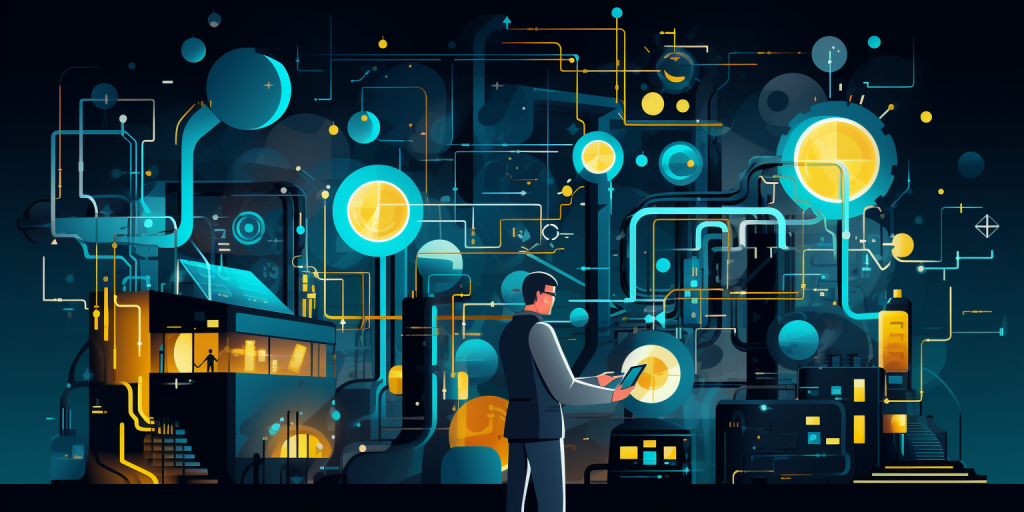Beyond ChatGPT and Large Language Models
With all the buzz around ChatGPT and other large language models, it’s easy to think AI is just about these impressive chatbots. But AI is much more than that. While large language models are a significant part of AI, they represent just one piece of a larger puzzle. Understanding the various foundational technologies that underpin AI can open up new opportunities and drive innovation in your business.
As a business leader, it’s crucial to grasp these concepts because they offer a competitive edge. AI technologies can streamline operations, enhance customer experiences, and uncover new revenue streams. By understanding and leveraging these technologies, you can make informed decisions, optimise processes, and stay ahead of the competition.
Table of Contents
AI Technologies You Should Know About
Let’s break down these building blocks and explore their practical applications.
| AI Technology | Consumer-Focused Technologies | Description |
|---|---|---|
| Neural Networks | Image Recognition (Google Photos, Facebook Tagging) | Systems that learn to recognise patterns in data. |
| Machine Learning Algorithms | Recommendation Systems (Netflix, Amazon) | Algorithms that make predictions based on data. |
| Natural Language Processing (NLP) | Large Language Models (ChatGPT, Siri) | Systems that understand and generate human language. |
| Computer Vision | Facial Recognition (Face ID, Snapchat Filters) | Technology that interprets and processes visual data. |
| Reinforcement Learning | Game Playing AI (AlphaGo, OpenAI Five) | Systems that learn by trial and error. |
| Generative Adversarial Networks (GANs) | Image Generation (DALL-E, DeepArt) | Systems that create new images or content. |
| Decision Trees | Predictive Analytics (Customer Churn Prediction, Credit Scoring) | Models that make decisions based on rules. |

Neural Networks
Neural Networks are inspired by the human brain. They consist of interconnected ‘neurons’ that process data in layers, learning to recognise patterns. This technology is used in image recognition tools like Google Photos and Facebook Tagging. In business, they can help with tasks like fraud detection, customer segmentation, and predictive maintenance.
Machine Learning Algorithms
Machine Learning Algorithms are designed to learn from data and make predictions. Netflix and Amazon use them to recommend shows and products based on your viewing and purchase history. These algorithms are vital for demand forecasting, inventory management, and personalised marketing campaigns.
Natural Language Processing (NLP)
Natural Language Processing (NLP) focuses on the interaction between computers and human language. Large Language Models (LLMs), such as ChatGPT and Claude, can understand and generate text, making them valuable for customer service chatbots, automating content creation, and even assisting with translation services.
Computer Vision
Computer Vision enables machines to interpret and process visual information, much like human vision. Apple’s Face ID and Snapchat Filters use this technology to recognise faces and apply effects. In business, it can be used for quality inspection in manufacturing, surveillance, and enhancing customer experiences in retail.
Reinforcement Learning
Reinforcement Learning involves learning by trial and error to achieve a goal. Systems like AlphaGo and OpenAI Five learn by receiving feedback from their actions and adjusting their strategies over time. This technology is useful for developing intelligent robotics, dynamic pricing strategies, and automated trading systems.
Generative Adversarial Networks (GANs)
Generative Adversarial Networks (GANs) consist of two neural networks: a generator and a discriminator. The generator creates new data, while the discriminator evaluates it. The ‘adversarial’ part refers to the competition between these networks, which improves the quality of the generated data. GANs can be used in design and creative industries for generating artwork, fashion design, and synthetic data for training other AI systems.
Decision Trees
Decision Trees are models that use a tree-like structure to make decisions based on rules derived from data. Each branch represents a decision path, leading to a specific outcome. They are used in predictive analytics to help businesses make data-driven decisions, such as predicting customer churn, financial forecasting, and customer relationship management.
Conclusion
AI is a complex and broad field. Large language models are a great starting point and the epitome of AI development currently, but they’re just one part of a broader AI landscape.
And OpenAI, Anthropic and other LLM developers have added multi-model functionality to give their chatbots the ability to see and create, e.g. with DALLE, etc. Expect to see more features added to these systems as they develop further.
If you’re looking to explore how AI can transform your business or need guidance on implementing these technologies, reach out to me.






